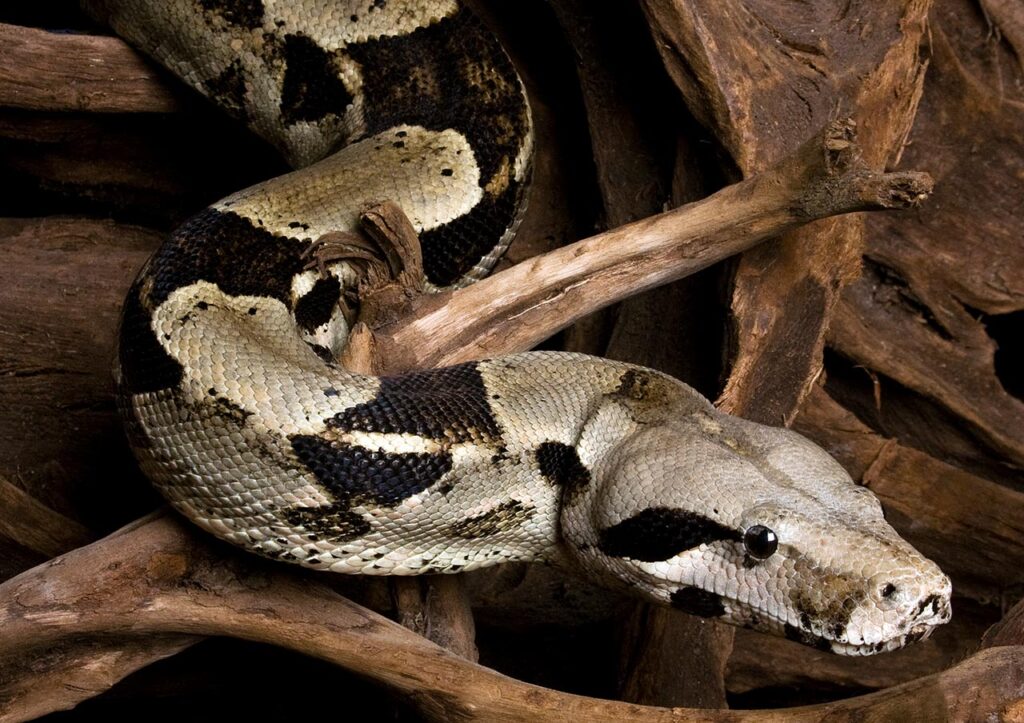Boa Constrictor Facts
The boa constrictor can be found in Mexico and throughout Central and South America. The boa constrictor is non-venomous, instead killing their prey by attacking and suffocating. Boa constrictors swallow their prey whole. It is also possible for these snakes to bite, but their bites are painful not poisonous. As carnivores, boa constrictors mainly feed on small mammals like bats and birds, as well as rats, squirrels, and opossums. Boa constrictors are nocturnal and will feed at night, hanging from the branches of trees to seek out prey with their heat sensitive scales. Mating occurs every other year from April until August, with birth occurring five to seven months later.

Boa Constrictor Infestation
Unless you’re in an environment where boas are common, you probably won’t need to get rid of them. However, removing food sources like rodents and other small mammals will keep them from coming around. Reducing shrubs and trimming grass will reduce their shelters. Sealing any openings in structures around your property will also be essential to keeping them out of your hair. However, if these snakes can be kept as pets, you won’t have much to worry about as long as you exercise caution.
Boa constrictors are often spotted along rivers and streams or found wrapped around tree branches when they’re out foraging for food. They may decide to burrow in the dens of medium-sized mammals. The boa constrictor prefers to sun itself in open areas and commonly shed their skin around their nesting site.
Boa Constrictor Bites
These snakes are not venomous, but their bites are still incredibly painful, so you should seek medical care if you’re attacked by one. Instead of elongated fangs, a boa constrictor has rows of curved teeth that are all the same size. They are constantly being replaced so it always has the ability to bite, but again, its strikes aren’t deadly.
Types of Boa Constrictors
Boa Constrictor Identification
Boa constrictors can range in length from 20 inches when they are born to 13 feet long as adults. Their bodies vary in color. Boa constrictors can be brown, gray, or cream-colored with reddish brown streaks, so as to easily blend in with their surroundings.
Boa Constrictors in the Garden & Home
Unless you live in a tropical rainforest, you probably will not find a boa constrictor in your home. It’s common for them to live in wooded areas, dry tropical forests, and desert-like areas, but in the wild, boa constrictors aren’t found in North America. However, they are hugely popular in the exotic pet trade, so you might see them keeping some critter connoisseurs company.
Frequently Asked Questions
Are boa constrictors poisonous?
Boa constrictor bites are not poisonous, just painful. In fact, there are not many negative impacts that boa constrictors have on humans.
Boa constrictors would only attack a human in self-defense. However, it is still possible for boa constrictors to wrap themselves around their owners and strangle them, so extreme caution should be used if they are being considered as a pet, especially if children are involved. When it’s time to feed them, never do it alone.
Always have at least one other person in the room, should the snake get nervous or excited and try to defend itself.
What are the benefits of professional snake pest control?
Any type of wildlife nuisance or pest can be risky to remove safely without the proper equipment or experience.
Professional pest control specialists have the technology, educational background, and skill to safely but effectively remove the animal while also protecting everyone on the property.
If you’re struggling with snakes on your property, contact us. Our technicians can remove them and help you regain control of your property and sanity.


